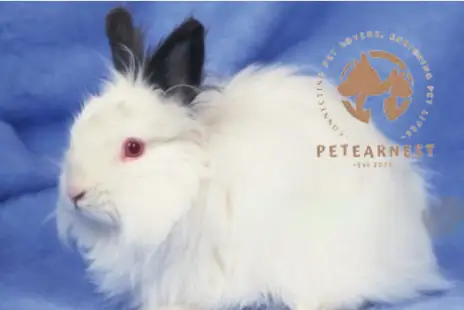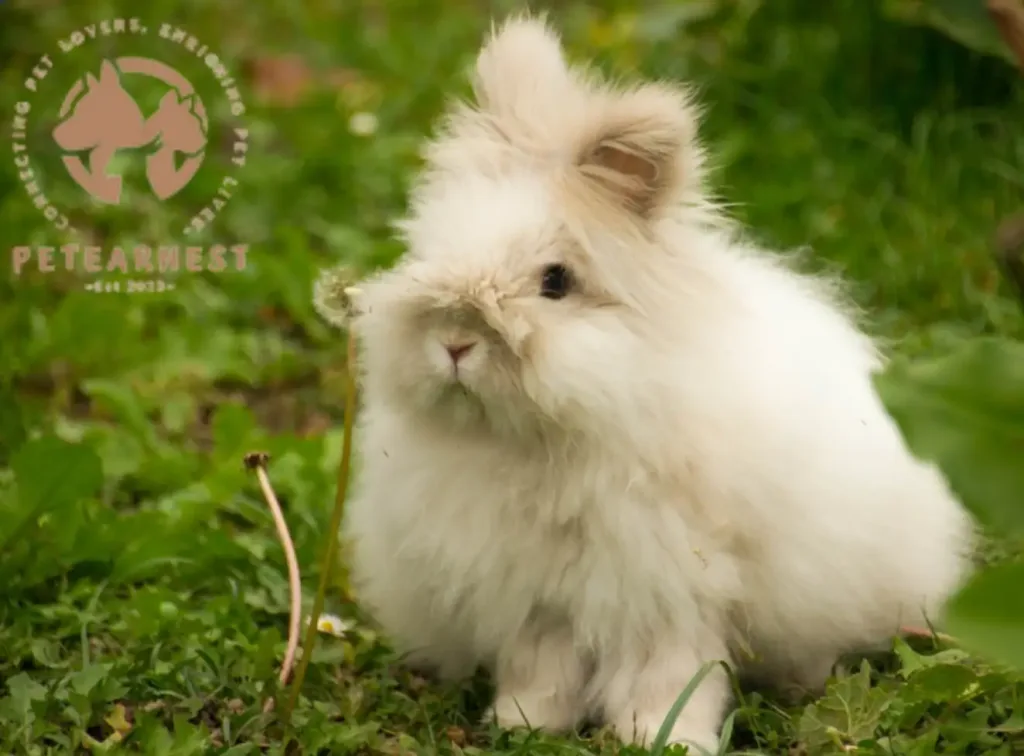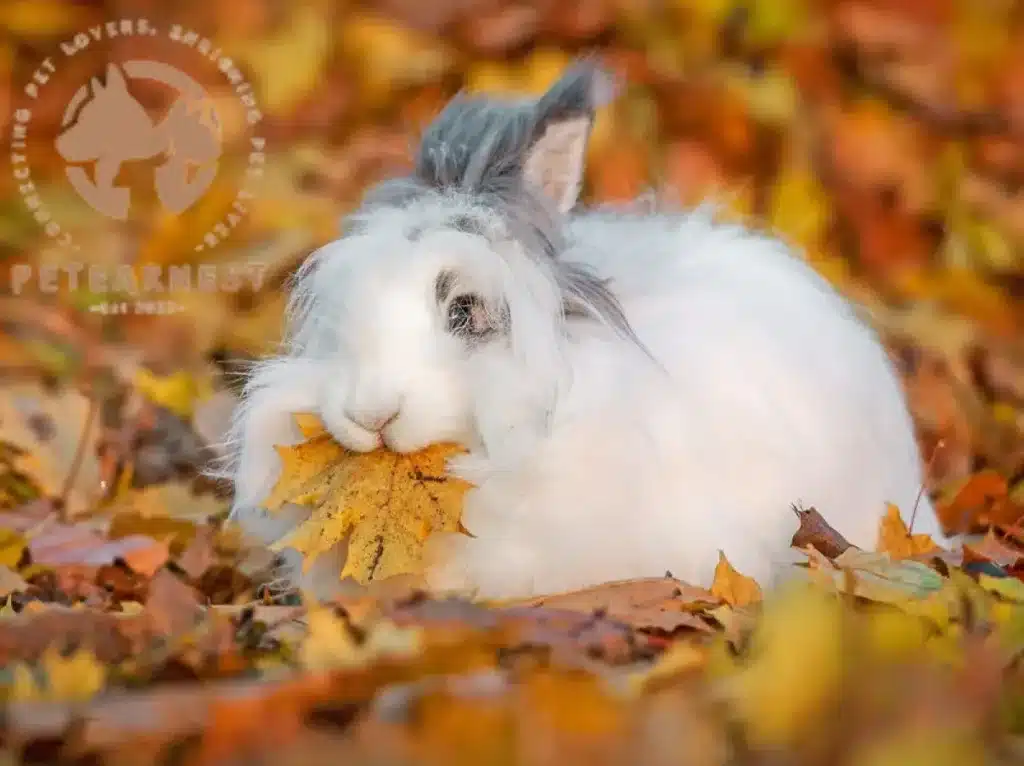The Angora rabbit wool is a luxurious and highly sought-after fiber, renowned for its softness, warmth, and durability. Domesticated for thousands of years, Angora rabbits produce a coat of long, fine fibers that make them both attractive pets and valuable contributors to the wool industry.
Explore the world of Angora rabbit wool in this comprehensive guide, delving into all aspects of these fluffy creatures, from their care and grooming to wool production. Whether you’re a seasoned breeder or simply interested in the Angora rabbit, this guide will provide you with valuable information and entertainment. Immerse yourself in the wonders of the Angora rabbit and discover everything you need to know about its prized wool!
“Embrace the fluff with Angora rabbit wool: Soft, cuddly, and stylish!”
“Soft as a cloud, white as snow, Angora wool is a beauty to show. Spun from the fur of a gentle bunny, Its warmth and comfort are simply yummy.
In autumn’s cool and winter’s chill, Angora wraps us in a warm shawl. It’s the ultimate luxury, don’t you see, For those who appreciate comfort and glee.
So next time you seek a blanket to hold, Choose Angora, worth its weight in gold. For its softness, warmth, and beauty too, Angora rabbit wool is the one for you.”

Table of Contents
History
The Angora rabbit is believed to have originated from the ancient city of Ankara, Turkey (formerly known as Angora), hence its name. It is believed that Angora rabbits were first domesticated by the Turkish people over 2000 years ago and were highly prized for their luxurious wool. The wool was used to make clothing, blankets, and other textiles. Over time, Angora rabbits were introduced to other parts of the world, and today they are kept as pets and for wool production in many countries.
The Angora rabbit has a unique coat of long, fine fibers that grows continuously, making it an ideal source of wool. Angora rabbit wool is known for its exceptional softness, durability, and warmth, making Angora rabbit wool a popular choice for clothing, blankets, and other textiles. Angora rabbits are considered relatively easy to care for, and their wool is relatively easy to process, making them an attractive choice for both pet owners and wool producers.
Despite their popularity, Angora rabbits are not without their challenges. Their wool can be prone to matting if not properly groomed, and the rabbits themselves are delicate and require special care. However, with proper care and attention, Angora rabbits can make delightful pets and valuable wool producers.
In conclusion, the Angora rabbit has a rich history as a domesticated pet and wool producer. luxurious Angora rabbit wool, easy care, and charming personality make it a popular choice for pet owners and wool producers alike. Whether you’re an experienced breeder or just starting out, the Angora rabbit is sure to capture your heart!
Personality
Angora rabbits are known for their gentle and friendly personalities, making them great pets for families with children. They are typically calm and docile, and they enjoy being cuddled and petted. Angora rabbits are social creatures and they thrive on human interaction, so they do best in households where they are given plenty of attention and affection.
Despite their gentle nature, Angora rabbits can be shy around new people and animals, so it’s essential to introduce them slowly and gently. They are also sensitive to stress and can become sick or even die if they are subjected to too much stress, so it’s crucial to provide them with a calm and stress-free environment.
Angora rabbits are active animals and they enjoy exploring their surroundings. They also enjoy playing with toys and other interactive objects, so it’s a good idea to provide them with plenty of toys and play areas.
In conclusion, Angora rabbits are friendly, gentle, and social animals that make great pets for families with children. They thrive on human interaction and they enjoy exploring their surroundings, so it’s important to provide them with plenty of attention, affection, and play opportunities. With the right care and attention, Angora rabbits can be wonderful companions that bring joy and happiness to their owners for years to come!
Health & Care of Angora rabbits
Angora rabbits are relatively low-maintenance animals that require a balanced diet, regular grooming, and a safe and comfortable living environment. They are prone to a number of health problems, however, so it’s important to be aware of the signs and symptoms of illness. Some of the most common health problems that Angora rabbits can experience include:
- Wool block: This is a condition where clumps of wool build up in the rabbit’s digestive system, causing blockages that can be life-threatening. Regular grooming is essential to prevent wool block.
- Heat stroke: Angora rabbits are sensitive to heat, so it’s important to keep them in a cool and well-ventilated environment. Signs of heat stroke include panting, lethargy, and a rapid heartbeat.
- Eye problems: Angora rabbits are prone to eye problems, including infections, abscesses, and cataracts. Regular cleaning and monitoring of the eyes are essential to prevent eye problems.
- Overgrown teeth: Angora rabbits have constantly growing teeth, so it’s important to provide them with plenty of chew toys to keep their teeth trimmed.
- Ear mites: Angora rabbits are susceptible to ear mites, which can cause itching, inflammation, and discharge.
Regular visits to the veterinarian are important to ensure that your Angora rabbit stays healthy and happy. Your veterinarian can help you develop a health and care plan for your rabbit and advise you on the best ways to prevent and treat common health problems. With the right care and attention, Angora rabbits can live long, healthy lives and provide their owners with years of joy and companionship.
5 Tips for Angora Rabbit Grooming
Angora rabbits are known for their long and luxurious wool, which requires regular grooming to keep it healthy and free from tangles and matting. Grooming your Angora rabbit is essential to keep them healthy and comfortable, and it also helps to bond with your pet. Here are some tips for grooming your Angora rabbit:
- Brush regularly: Brush your Angora rabbit regularly to remove any tangles or mats. Use a slicker brush or a metal comb to remove any knots. Brushing also helps to distribute natural oils throughout the wool, keeping it healthy and shiny.
- Trim the wool: Angora rabbits need to be trimmed every 3-4 months to keep their wool from becoming too long and heavy. Trim the wool around the rabbit’s bottom and legs to keep it clean and prevent matting.
- Bathe occasionally: Angora rabbits do not need to be bathed frequently, but occasional baths can help to keep the wool clean and free from dirt and debris. Use a gentle rabbit shampoo and be sure to rinse thoroughly to avoid skin irritation.
- Clean ears: Check your Angora rabbit’s ears regularly for any signs of mites or infection. Clean the ears with a cotton ball and a mild solution of vinegar and water.
- Check for wool block: Wool block is a serious condition that occurs when clumps of wool build up in the rabbit’s digestive system. Regular grooming can help to prevent wool block, but it’s important to keep an eye out for signs of this condition, such as loss of appetite and lethargy.
In conclusion, grooming your Angora rabbit is an important part of caring for your pet. Regular brushing, trimming, bathing, and ear cleaning can help to keep your Angora rabbit healthy and comfortable, and bonding with your pet during grooming sessions is a great way to build a strong and loving relationship.
Diet
Angora rabbits are herbivores and they require a balanced diet to maintain their health and well-being. The main components of a healthy diet for Angora rabbits include hay, fresh vegetables, and a small amount of pellets. Here’s what you need to know about feeding your Angora rabbit:
- Hay: Hay should be the foundation of your Angora rabbit’s diet. It provides essential fiber for digestive health and helps to keep their teeth trimmed. Offer your rabbit a constant supply of fresh hay.
- Fresh vegetables: Fresh vegetables such as carrots, lettuce, and kale can be offered in small quantities as a supplement to the hay. Be sure to introduce new vegetables gradually and avoid vegetables that are toxic to rabbits, such as potatoes and rhubarb.
- Pellets: Pellets should be offered in moderation and should make up no more than 10% of your Angora rabbit’s diet. Choose a high-quality pellet that is specifically formulated for rabbits.
- Water: Fresh water should be available to your Angora rabbit at all times. Change the water daily and clean the water dish regularly to prevent contamination.
- Treats: Treats should be offered in moderation and should not make up a significant part of your Angora rabbit’s diet. Good treat options include fresh fruits and vegetables, dried fruit, and high-quality treats specifically formulated for rabbits.
It’s important to feed your Angora rabbit a balanced diet to ensure that they remain healthy and happy. Offer fresh hay and vegetables and a small amount of pellets, and be sure to provide fresh water at all times. With the right diet, your Angora rabbit can enjoy a long and healthy life.

Angora Rabbit Wool: From Farm to Fashion
Angora rabbits are native to the high plateaus of central Asia, but they have been widely bred and raised in many other regions of the world. The best climate for producing angora rabbit wool depends on several factors, including the health and well-being of the rabbits, the quality of the wool, and the efficiency of wool production.
Ideal climates for angora wool production are those with moderate temperatures, low humidity, and low levels of air pollution. This type of climate helps to keep the rabbits healthy and prevent wool damage, while also allowing the wool to grow quickly and be harvested efficiently.
In regions with hot and humid climates, angora rabbits can be more susceptible to heat stress and other health problems, which can lead to lower angora rabbit wool production and lower-quality wool. Similarly, regions with cold and harsh climates can be challenging for angora rabbits, as they may struggle to maintain their body temperature and may experience wool breakage or other damage.
In general, angora rabbit wool production is most successful in temperate regions with moderate climates, such as parts of Europe, North America, and Australia. However, with proper care and management, angora rabbit wool can also be produced successfully in other regions with different climates, provided that the rabbits are well-cared for and protected from the elements.
10 interesting facts about Angora rabbits
- The Angora rabbit is the oldest breed of domesticated rabbits, with a history dating back over 2000 years.
- Angora rabbits have the longest wool fibers of any domesticated animal, with some fibers growing up to 10 inches long.
- Angora rabbits need to be groomed regularly to keep their wool from matting and tangling, as well as to keep the rabbits healthy and comfortable.
- The wool of the Angora rabbit is considered to be hypoallergenic, making it a popular choice for people with sensitive skin.
- Angora rabbits are known for their gentle and friendly personalities, making them great pets for families with children.
- Angora rabbits are relatively low maintenance, requiring a balanced diet, regular grooming, and a safe and comfortable living environment.
- Angora rabbit wool is used to make a variety of clothing and accessories, including scarves, hats, gloves, and blankets.
- Angora rabbits are delicate animals that are sensitive to stress, so it’s crucial to provide them with a calm and stress-free environment.
- Angora rabbits come in a variety of colors, including white, black, grey, and brown.
- Angora rabbits are often used in wool-spinning competitions, where participants compete to see who can spin the longest and finest fibers from an Angora rabbit.
Angora rabbit wool is prized for its softness and fluffiness, making it a popular material for clothing and textiles. One interesting fact about Angora rabbit wool is that it continues to grow throughout the rabbit’s life, and must be regularly clipped to prevent matting and discomfort for the rabbit. Additionally, it is seven times warmer than sheep wool, due to its unique insulating properties.
Angora Rabbit Wool: The Softest and Fluffiest Fiber in the World
Angora rabbit wool is renowned for its softness and fluffiness, making it a popular choice for clothing and textiles. This unique fiber is obtained from the Angora rabbit, which is native to Turkey. The production of Angora rabbit wool is a delicate process that requires careful care and attention.
The Angora rabbit is an extremely soft and gentle creature, and its wool is carefully harvested by plucking or shearing. The Angora rabbit produces a lot of fine, soft, and fluffy wool that is ideal for spinning and weaving. The production of Angora rabbit wool is a slow process, and it can take up to six months for the rabbit to grow enough wool for a single harvest. This makes Angora rabbit wool a luxury fiber that is much more expensive than other types of wool.
In order to ensure the highest quality wool, Angora rabbits must be well-cared for. They need to be kept in a clean and safe environment, with proper nutrition and regular grooming to prevent matting. The rabbits are also sheared every three to four months to keep their coats healthy and prevent them from overheating.
The production of Angora rabbit wool is a sustainable and eco-friendly process. Angora rabbits are not subjected to mulesing, which is a cruel practice that is commonly used in the production of other types of wool. Additionally, Angora rabbit wool is biodegradable, making it a great choice for those who are concerned about the environment.
Angora rabbit wool is a luxurious and high-quality fiber that is sought after for its softness and fluffiness. The production of Angora rabbit wool is a slow and delicate process, but it is a sustainable and eco-friendly alternative to other types of wool. Whether you’re looking for warm and cozy clothing or soft and fluffy textiles, Angora rabbit wool is a great choice.

Conclusion
Angora rabbit wool is a luxurious and versatile material that offers numerous benefits for clothing and textiles. With its softness and warmth, it is a popular choice for a wide range of products, from winterwear to stuffed animals. Grooming an Angora rabbit is an important part of maintaining its health and the quality of its wool, and requires regular clipping to prevent matting. Whether you’re an avid knitter or simply enjoy the coziness of Angora products, this guide provides a comprehensive overview of the world of Angora rabbit wool.



1 comment
[…] For more information on how to care for your furry friends, check out our article on “The Ultimate Guide to Guinea Pig Care.“ […]